

CarExpert.com.au
The CarExpert team's favourite cars of 2025
13 Hours Ago
Performance Editor takes the all-electric Porsche Taycan Turbo S around Queensland Raceway – does it perform like a real Porsche should?
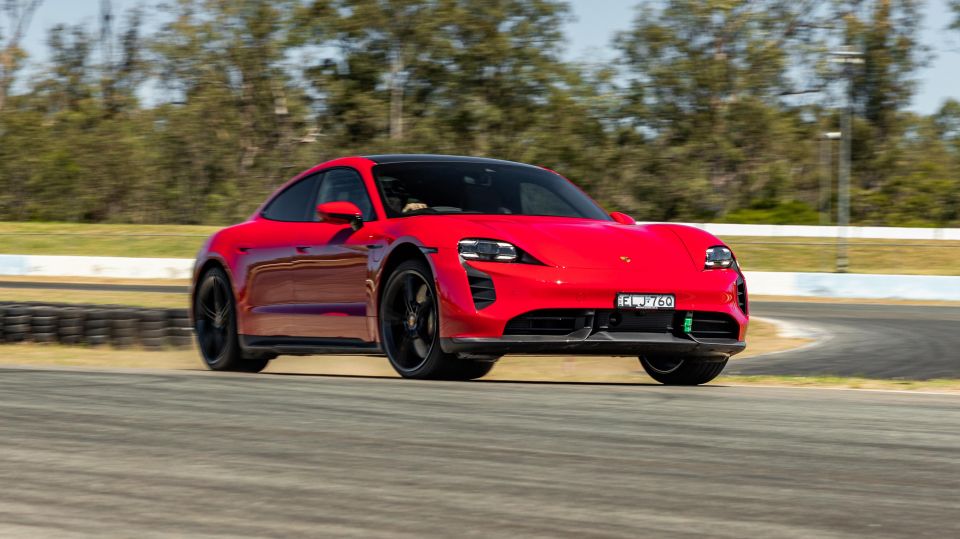
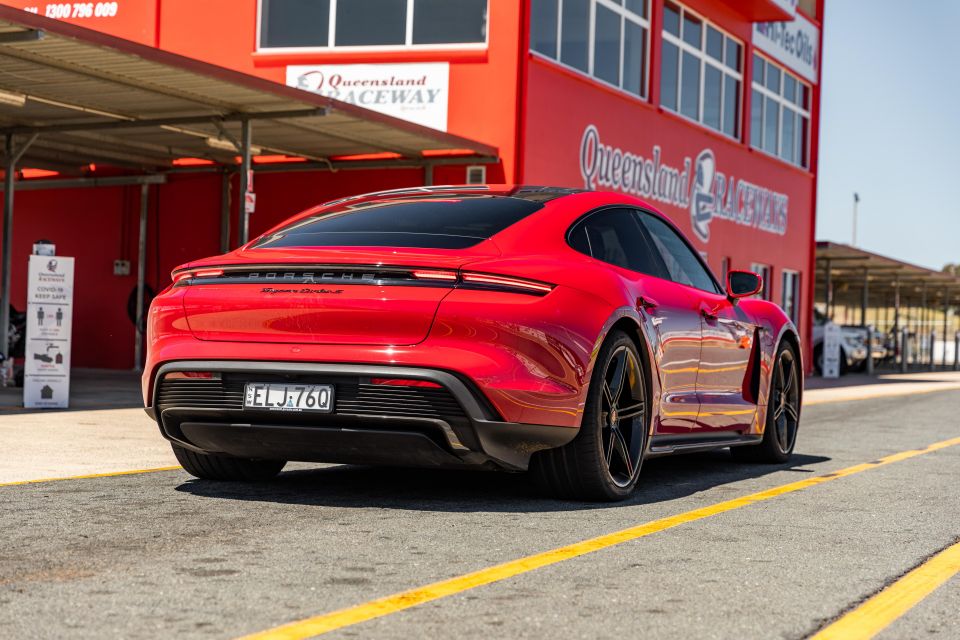

Performance Editor
New from
$339,100
excl. on-roads

Performance Editor
New from
$339,100
excl. on-roads


Performance Editor
New from
$339,100
excl. on-roads

Performance Editor
New from
$339,100
excl. on-roads
Quickly see how this car stacks up against its competition. Select any benchmark to see more details.
Where expert car reviews meet expert car buying – CarExpert gives you trusted advice, personalised service and real savings on your next new car.
My experience in electric vehicles (EVs) on track is basically zero, so to be thrown straight into one of the ultimate versions of what is available in this space right now was exciting. but at the same time a little unnerving.
I fully expected the Porsche Taycan Turbo S to be capable on track, but absorbing and processing how to extract the most out of it was what concerned me most.
Not only is this the future of our on-road driving experience, it’s also the future of motorsport. The challenge will be for the manufacturers who actually care about the driving experience to maintain the connection between driver and the vehicle.

Torque and power delivery are undeniably the Porsche Taycan Turbo S’s biggest allies on the track, with the sheer mass of the vehicle being the biggest limitation.
To say we were a little unsure of what the ultimate position on the leaderboard would be is an understatement. A quick poll of the people at the track gave about a five-second window of how the Taycan Turbo S would perform.
Somehow, I was the most optimistic of the group! Some people were wondering if it could even break the one-minute mark around the CarExpert test track.
But the biggest question remained, is it still a Porsche at heart?
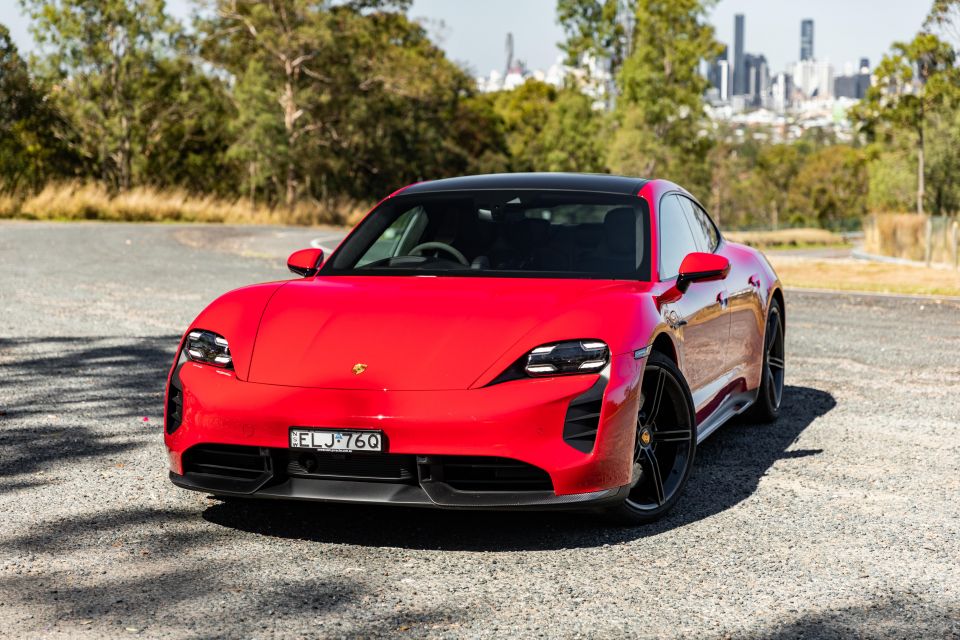
A short section of winding road gave me the indication that the Taycan Turbo S is something special.
This is the only vehicle I have ever driven that had given me the same sensation you get from a World Rally Car on tarmac.
This is where the Taycan Turbo S shines: short bursts of acceleration, right at the limit of grip, without the slightest sense that it will go over it.
The way that it slingshots between corners is truly epic!
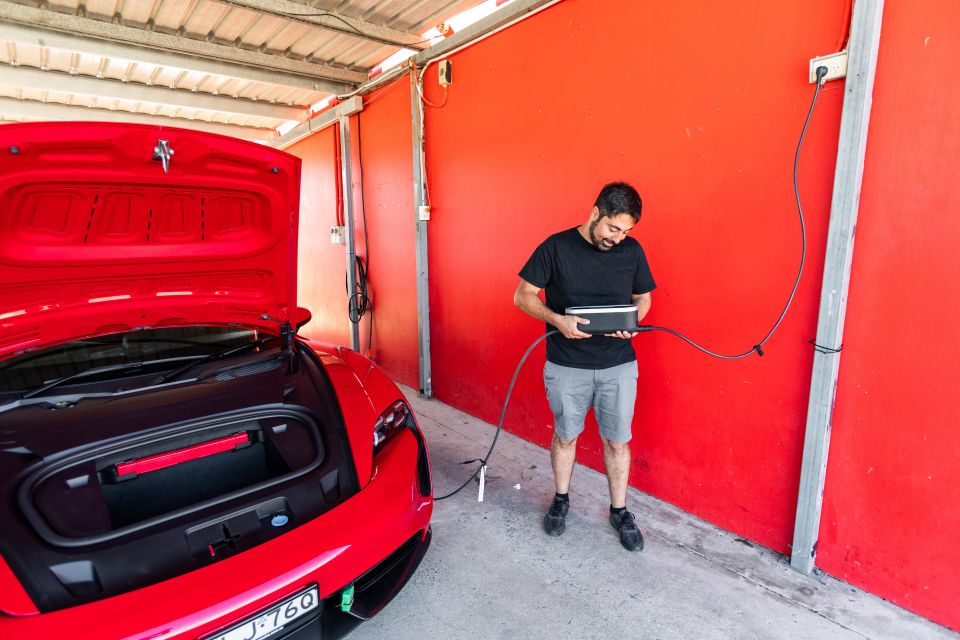
The Porsche Taycan Turbo S can generate up to 560kW of power and an insane 1050Nm of torque in overboost, with 460kW the normal max power figure.
The interesting part for me, is the power and torque curve and how that relates to real-world performance. Managing that insane amount of torque, which is on tap from basically when you hit the right pedal, is the biggest challenge and Porsche seems to have nailed it.
There is a much bigger overlap here between the motors and driver aids than in a vehicle with an internal-combustion engine. Rather than reacting to an over delivery of power – i.e. you stepping on the accelerator too hard – the Taycan is managing your every move, but it always seems one step ahead.
Yes, it is possible to ask too much, but if you have some sense of throttle control it seems almost impossible to get it wrong. It doesn’t ever feel like it’s interfering, it just gives you exactly the right amount of torque for the level of grip. You can have some slight tyre noise mid-corner and as soon as you apply some throttle everything just comes together, which is the opposite to what you would expect.
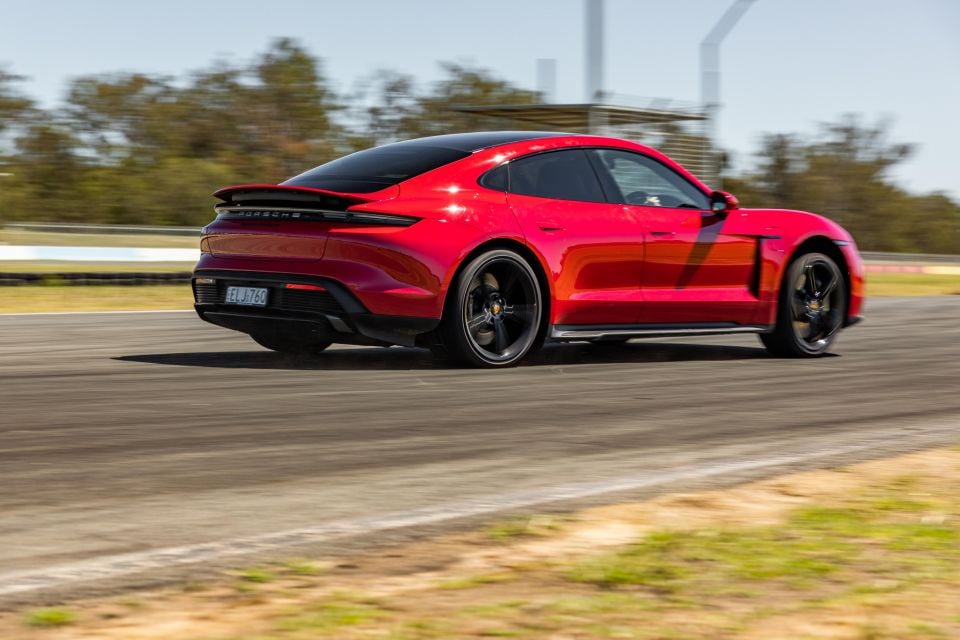
When you turn off the traction control, you can easily exceed that limit, but because the traction control and power train are so connected, there isn’t a need to do this, because the Taycan Turbo S can do it better than you or I ever will.
The sense of outright power is strange as well. With an electric motor, Porsche can overlap the torque and power curves exactly how it wants for optimum acceleration. Then without gear shifts, you just watch the speedo climb constantly and rapidly, but almost underwhelmingly. Because the low down response is so insane, it almost dulls the top-end experience and you don’t appreciate the speed the car has actually gathered in such a short space of time.
Unfortunately, by the time we had completed the hot laps, we weren’t able to use launch control due to the battery level. The claimed 0-100 is 2.8 seconds, and we have already seen Tony get into the 2.4s at the launch earlier this year, which is no surprise given Porsche is usually conservative with performance claims.
I did one launch without launch control and overboost and it still managed 3.1 seconds.
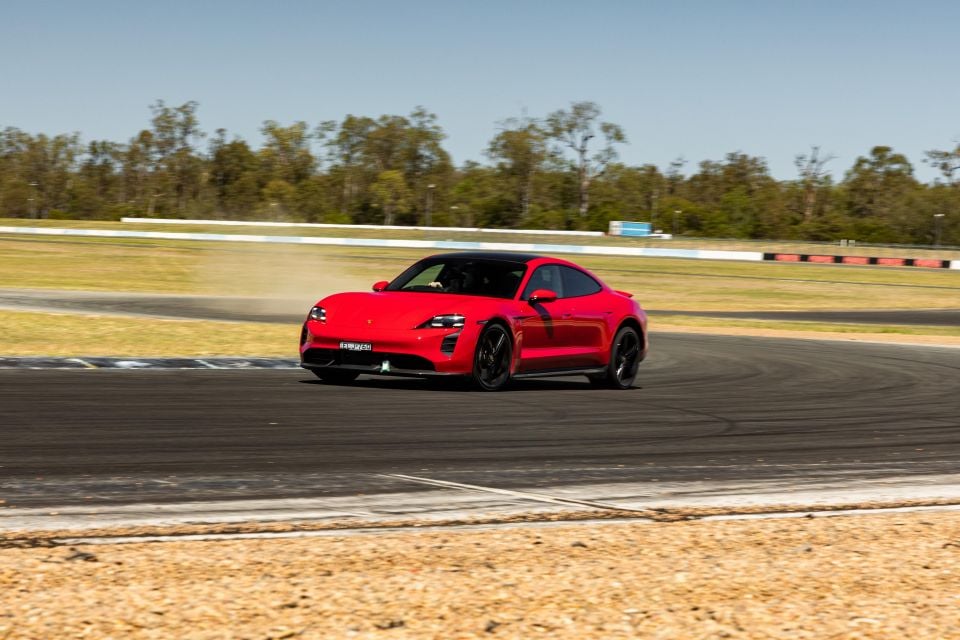
This is normally one of the areas where Porsche absolutely dominates. It’s not something I really noticed on the road, but once I was on the track, I could feel that it wasn’t quite on the level of the other Porsches we have had.
The pedal travel was a lot longer than normal and although it was consistent, it was hard to gauge exactly how hard to press the pedal.
It did the 100-0 in 3.09sec over 37.15m, with the weight of the car playing a big role in that result.
For everyday use, you are not going to be disappointed, it just lacked the feel and response I have become accustomed to from Porsche.
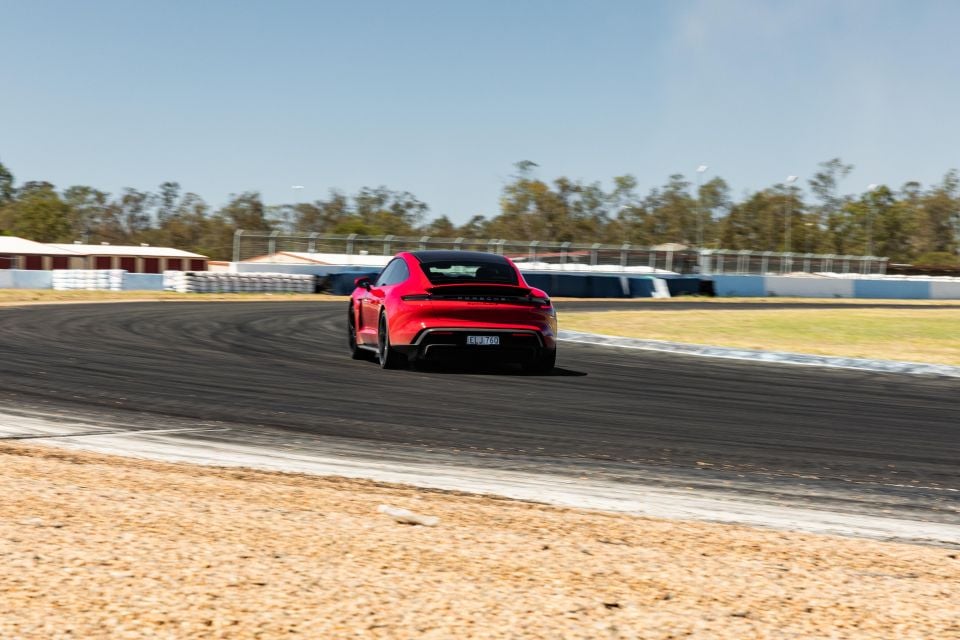
Porsche has done a really good job managing the weight of the Taycan Turbo S, which is a big challenge at 2295kg. It is 644kg heavier than a Porsche 911 Turbo and 825kg heavier than the number one car on our CarExpert leaderboard, the Porsche 911 GT2 RS.
The positive is that most of that weight is inside the wheelbase, with the centre of gravity very low. As a result, the level of roll in the car is very controlled, and this is aided by the use of electromechanical anti-roll bars.
That being said, the first time I headed into turn one at Queensland Raceway I completely missed the apex – which is far from ideal. The Taycan Turbo S turned, but I couldn’t keep moving it across as I would normally expect. It was not like a big understeer, more just a general unwillingness to go where I wanted it to.
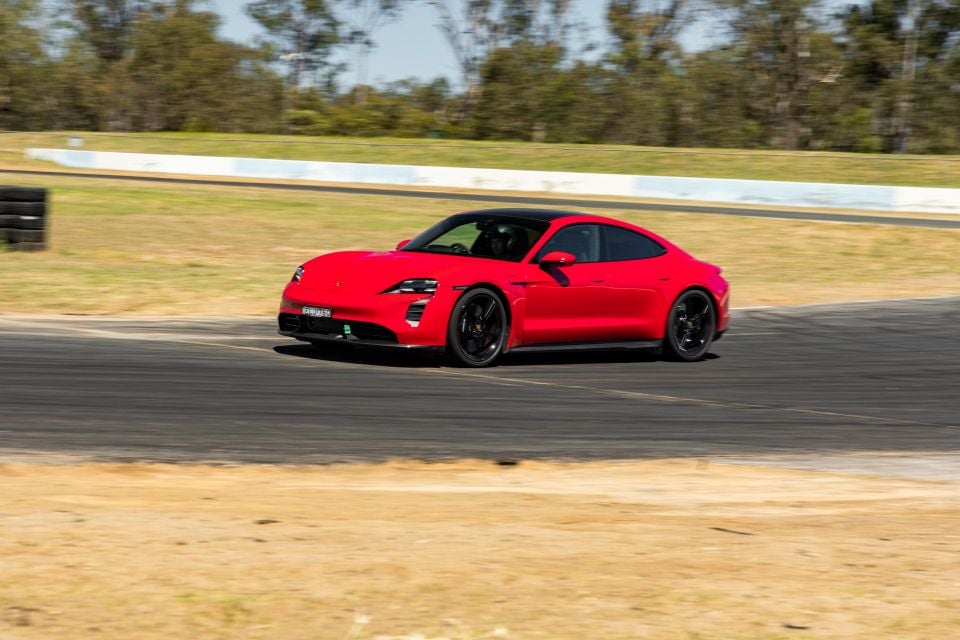
Once I had recalibrated myself, I was able to visit the apexes more regularly. The lateral grip was actually very good and the traction was exceptional. Everything just had to be done with an understanding that if you’re in the wrong position it’s going to be much harder to recover due to all that weight.
Change of direction is very good, with the normal Porsche connection between the steering wheel and the chassis.
Balance on throttle was absolutely perfect and you could control a neutral drift right to the edge of the road. Over committing on entry did tend to lead to a loss of rear grip, and I was grateful a few times when the car assisted to control it.

This section becomes a bit irrelevant in an electric world, although the Porsche Taycan Turbo S does have a two-speed transmission which is used to assist the insane 0-100 time. Once up and running, it maintains the higher gear.
The benefit of not having to shift gear on the track is huge, that constant acceleration being a massive advantage. Funnily enough, I did find myself occasionally reaching for a paddle to upshift, which was a waste of time.
The Taycan Turbo S does have a rear electronically-controlled rear differential, and from a traction perspective the car was just insane. The differential must be playing a role in this, but my feeling of this from a driver’s point of view was almost non-existent.
On corner entry it felt free and able to rotate, with Porsche’s Torque Vectoring Plus assisting with this.
Due to the fact that I have nothing to compare it to in the electric world, I am really looking forward to building my understanding of electric cars on track and seeing how the opposition compare against the Porsche.
Is it really that easy, or has Porsche done an amazing job?

The suspension has been designed to highlight the strengths of the Taycan Turbo S.
Even in the Sport Plus setting, it feels on the softer side and has no real harshness at all. This really helps with traction, which is so important with the amount of torque at hand.
On the track it felt better if you avoided the kerbs, possibly due to the electromechanical anti-roll bars already being quite firm due to the lateral load, via the Porsche Dynamic Chassis Control (PDDC).
At the same speed if you stayed on the smooth tarmac the Porsche Taycan Turbo S was unbelievably flat and planted.
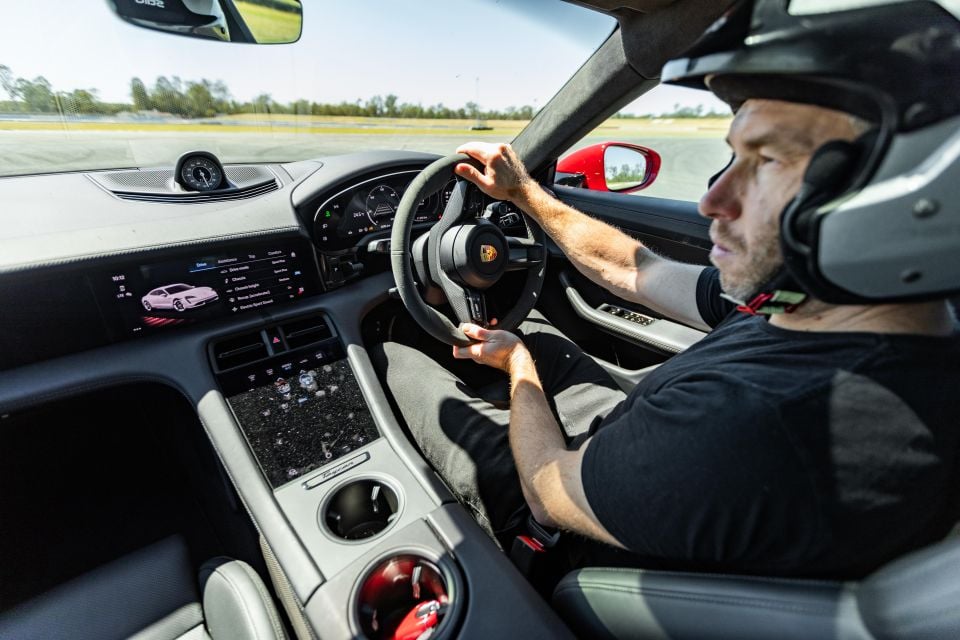
The steering was very precise, linear and nicely weighted, but the feedback was a little numb.
The Pirelli P-Zero Elect tyres on the Taycan Turbo S are a specially developed for electric vehicles. They offer reduced road noise and low rolling resistance for increased efficiency, while also being adapted to deal with the added vehicle weight.
The grip these provided and the ability to deal with the huge levels of torque was very impressive, but the energy from both a power and weight point of view, put a noticeable strain on the tyre. The best lap always came on the first outing from the pits each time.

I did all the laps in Sport Plus and found the best setting for the Porsche Stability Management (PSM) was in the restricted mode, which allows a small amount of lateral movement, but with a light safety net.
I never found it to be interfering with my driving and the few times I lost the rear of the car, it was able to do a good job of managing the slide.
To be honest, all the systems in the Taycan Turbo S are excellent in their ability to control situations without being noticed.

I really liked the layout of the dash, with the modern take on the classic Porsche dials.
Everything is simple and straightforward to use and I liked having the drive mode selector on the wheel.
The steering wheel and seats are all really well positioned, but angled more towards road performance rather than track use.
Despite this, I had no issue with moving around too much on the track and it was really comfortable on the road.
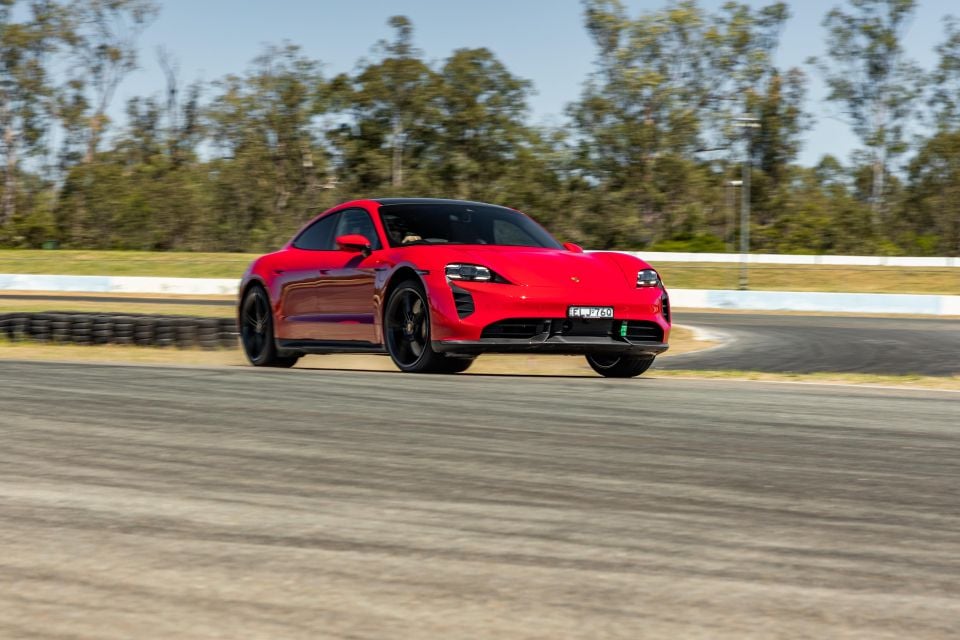
Where expert car reviews meet expert car buying – CarExpert gives you trusted advice, personalised service and real savings on your next new car.
As cynical as our predictions were for the Taycan Turbo S’s lap time, believing them was even worse.
After Lap 1, I checked the time – 56.31 seconds – I was impressed, but also I wasn’t sure. It didn’t feel that fast. Then I got a call to come in and change the timing box, and I thought there must have been an error.
I knew I had left a bit on the table, it was my first ever lap in an electric car on a track after all, but now I would be disappointed if it wasn’t that fast.
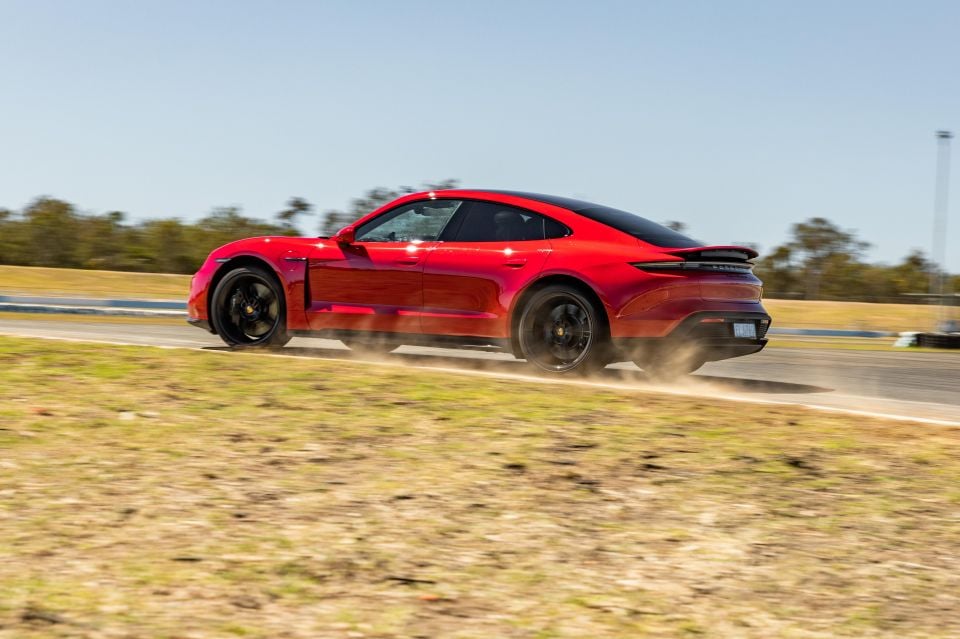
A quick check on tyre pressures and then I was back out and there was nothing to worry about – 55.94s on Lap 2. I tried two more laps, but I couldn’t do any better.
A 55.94-second lap for a 2295kg car to lap our test track – that’s only a second off the time I did in the Porsche GT3 RS and fourth place overall on the leaderboard. I was very impressed, as was everyone else.
Is it still a Porsche? Absolutely! It rewards the driver massively and puts a huge smile on your face, but in a slightly different way. If this is its first attempt at an EV, I can’t wait to see where it can take electric performance cars in the future.
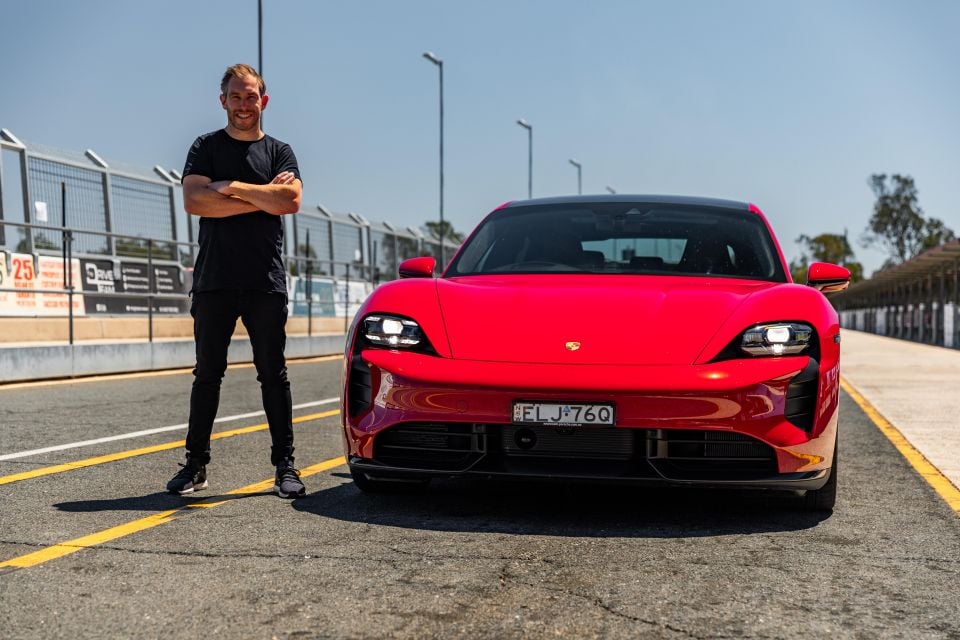
Click the images for the full gallery
Where expert car reviews meet expert car buying – CarExpert gives you trusted advice, personalised service and real savings on your next new car.


CarExpert.com.au
13 Hours Ago


Damion Smy
2 Days Ago


Damion Smy
6 Days Ago


Max Davies
7 Days Ago
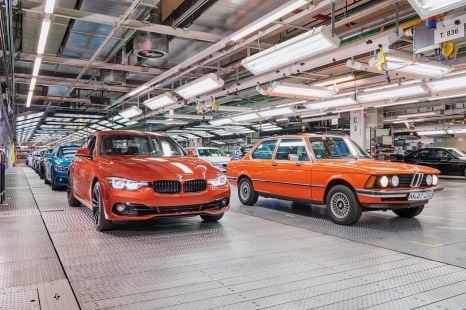

Ben Zachariah
9 Days Ago
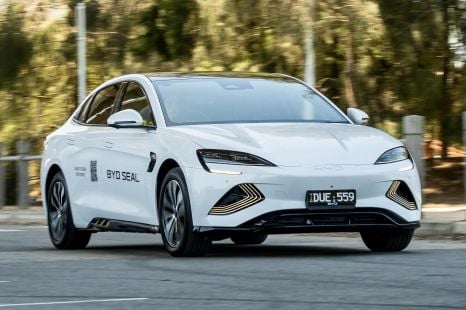

Max Davies
10 Days Ago